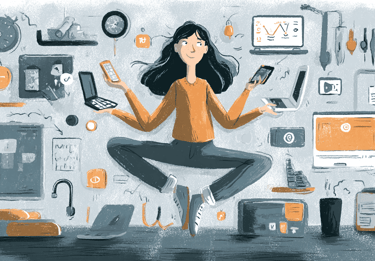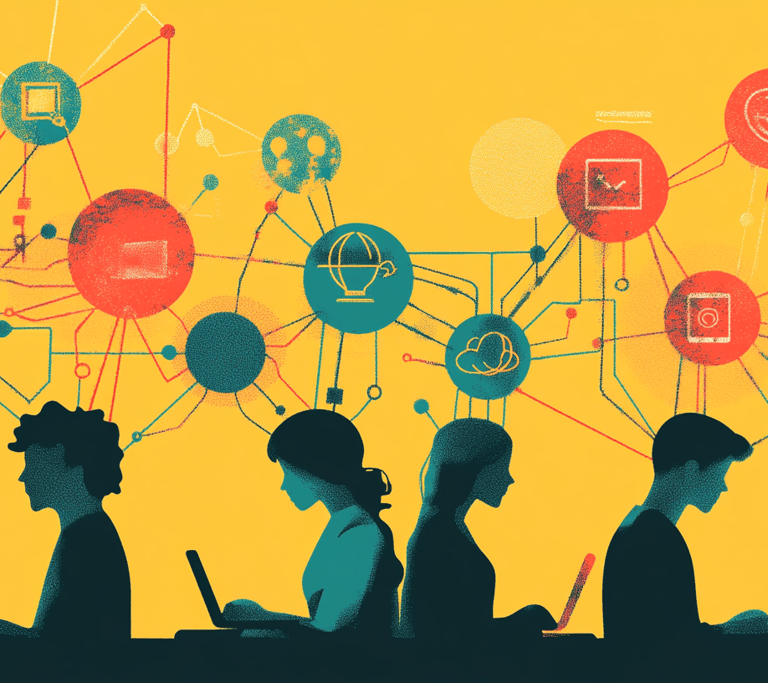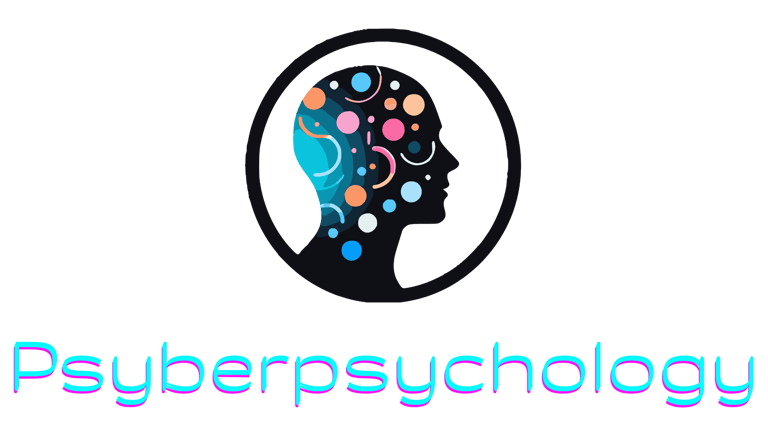Doomscrolling and Digital Addiction — How the Internet Hijacks Our Attention
DIGITAL DETOX


Why do we continue scrolling through disturbing news feeds even when it makes us feel worse?
If you've ever found yourself in a late-night spiral of consuming increasingly negative content, unable to put your phone down despite growing anxiety, you're familiar with "doomscrolling" — and you're not alone.


The Endless Scroll - Why We Can't Look Away From Bad News




The Psychology Behind Doomscrolling


What is Doomscrolling?
Doomscrolling (or "doomsurfing") describes the tendency to continue scrolling through bad news, even though the information might be saddening, disheartening, or depressing.
This behavior became particularly prevalent during the COVID-19 pandemic, but continues to flourish during any period of uncertainty or crisis.
Research suggests that many people now spend a significant portion of their waking hours on digital devices, with much of that time devoted to consuming news and social media.
For many, this consumption has evolved from casual browsing into compulsive checking — a psychological and behavioral pattern that shares disturbing similarities with addiction.
The term "doomscrolling" itself gained widespread recognition during the pandemic, but the behavior reflects a deeper shift in how we consume information in the digital age.


Negativity Bias
Our brains have an inherent negativity bias — an evolutionary adaptation that helped our ancestors survive by paying special attention to potential threats.
Neuropsychologists have found that our brains are naturally more receptive to negative experiences while positive ones often fail to make the same lasting impression.
This ancient wiring makes us naturally more responsive to threatening or negative information. Bad news catches and holds our attention in ways that positive news simply cannot match, which explains why we're drawn to alarming headlines even when they make us feel terrible.


Fear of Missing Out (FOMO)
The information age has introduced a new anxiety: the fear that something important is happening and we're not aware of it. This constant need to stay updated creates a powerful incentive to keep checking our feeds.
Digital wellness experts note that FOMO has evolved beyond just social events to encompass current events and news, making people feel vulnerable if they aren't constantly informed, especially during times of crisis.


Practical Strategies to Break the Doomscrolling Cycle
The Impact on Mental Health
Beyond the immediate stress of consuming negative content, doomscrolling has been linked to broader mental health concerns.
The constant exposure to distressing news can contribute to feelings of helplessness, anxiety, and depression. Sleep patterns often suffer as well, with many people scrolling late into the night, disrupting their circadian rhythms and reducing sleep quality.
Interestingly, research in psychology has shown that while people often doomscroll believing it will help them feel more informed and in control, the opposite tends to occur.
The behavior typically increases feelings of uncertainty and powerlessness rather than reducing them.






How Platforms Manipulate User Behavior
Variable Reward Systems
The unpredictable nature of scrolling creates a powerful psychological hook. Sometimes you encounter mundane posts, but occasionally you discover something shocking, informative, or emotionally powerful. This variable reward system mirrors the mechanics that make gambling so addictive.
Just as slot machines occasionally deliver a win to keep players engaged, social feeds occasionally deliver content that triggers strong emotional responses — keeping us scrolling in anticipation of the next hit.
Dopamine-Driven Algorithms
Social media platforms and news apps aren't designed with your wellbeing in mind — they're engineered for engagement.
Features like infinite scroll, autoplay, and push notifications exploit the brain's dopamine system, creating the same neurological patterns seen in other behavioral addictions.
Technology ethicists have pointed out that major platforms employ teams specifically tasked with making their products as habit-forming as possible, maximizing time spent and user engagement rather than user wellbeing.
It's worth noting that these design choices aren't accidental. The business model of many social platforms relies on advertising revenue, which depends on keeping users engaged for as long as possible.
This creates a fundamental tension between user wellbeing and business incentives.
The Role of Algorithmic Amplification
Content that evokes strong emotions — particularly outrage, fear, or anxiety — generates more engagement through comments, shares, and clicks. Algorithms detect this engagement and promote such content more widely, creating a feedback loop that prioritizes the most sensational or emotionally charged material.
Internal studies from major social media companies have revealed that their algorithms give greater weight to emotionally charged reactions, effectively amplifying divisive and upsetting content across their platforms.


The Addictive Feedback Loop
Doomscrolling often begins as a well-intentioned effort to stay informed, but quickly devolves into a self-perpetuating cycle:
We feel anxious about current events
We seek information to regain a sense of control
The negative content increases our anxiety
The heightened anxiety drives us to seek more information
And the cycle continues
Many find themselves trapped in this loop, with each scroll promising relief but actually delivering more distress.
Mindful Media Consumption
Time-boxing: Designate specific times of day to check news and social media rather than allowing constant interruptions. Many find that limiting news consumption to 30 minutes in the morning and evening provides adequate information without overwhelming their mental health.
Content curation: Be intentional about what you consume. Follow accounts that share solutions-oriented news, positive developments, or content that inspires rather than frightens. Consider using tools like NewsGuard that help identify reliable sources. Diversifying your information sources can also help you avoid echo chambers that amplify anxiety.
The "one-click rule": Before opening a news app or social media platform, ask yourself what specific information you're looking for. If you can't identify a clear purpose, consider skipping it entirely.
Ask yourself: Before you scroll, pause and ask "What am I hoping to gain from this? How will I feel afterward?" This simple mindfulness practice can interrupt automatic behavior.
Digital Boundaries
Physical barriers: Charge your phone outside your bedroom, use a kitchen safe to lock devices away during certain hours, or delete particularly problematic apps from your phone.
Technical solutions: Utilize built-in screen time limits, app blockers like Freedom or Forest, or try grayscale mode on your phone (which makes colorful apps less visually stimulating).
Notification detox: Turn off all non-essential notifications. If something is truly urgent, you'll hear about it without a ping.
Mental Health Techniques
Grounding exercises: When you feel the urge to scroll, try the 5-4-3-2-1 technique: identify 5 things you can see, 4 things you can touch, 3 things you can hear, 2 things you can smell, and 1 thing you can taste.
Alternative activities: Create a list of satisfying alternatives to scrolling: reading a book, taking a walk, calling a friend, or engaging in a hobby that uses your hands.
Process emotions: Rather than numbing difficult feelings with screen time, try journaling about your concerns or speaking with a trusted friend or therapist.
Reclaiming Your Attention
Doomscrolling is not an individual failure of willpower but a natural response to platforms engineered to capture and hold our attention regardless of the psychological cost. Breaking free requires both awareness and action.
Remember that staying informed doesn't require constant consumption. In fact, taking breaks from the news cycle often leads to better understanding and more effective responses to world events.
You don't have to be at the mercy of the scroll—small changes can help you regain your attention and peace of mind. Your brain deserves better than an endless feed of anxiety-inducing content, and with mindful boundaries, you can develop a healthier relationship with digital media.
Quick Tips Box:
Set a timer before you start scrolling
Use airplane mode for distraction-free periods
Disable infinite scroll features when possible
Subscribe to weekly news summaries instead of alerts
Create tech-free zones in your home
24-Hour Challenge:
Try a one-day "doomscroll detox." Notice your urges to check feeds, how you feel throughout the day, and what you accomplish with the time you reclaim. Share your experience with a friend and consider making it a weekly practice.




The Psychological Impact of Social Media
An exploration of social media's dual impact on mental health, examining how digital platforms simultaneously connect and isolate us while offering practical strategies for healthier engagement.


Digital Identity - How We Construct and Perform Ourselves Online
Examine how we craft our online identities, examining the psychological impact of digital self-presentation and the increasingly blurred boundaries between our virtual and authentic selves.


The Psychology of Online Communities - How Digital Tribes Shape Behavior and Belonging
This article examines how digital tribes fulfill our fundamental need for connection in modern society.
